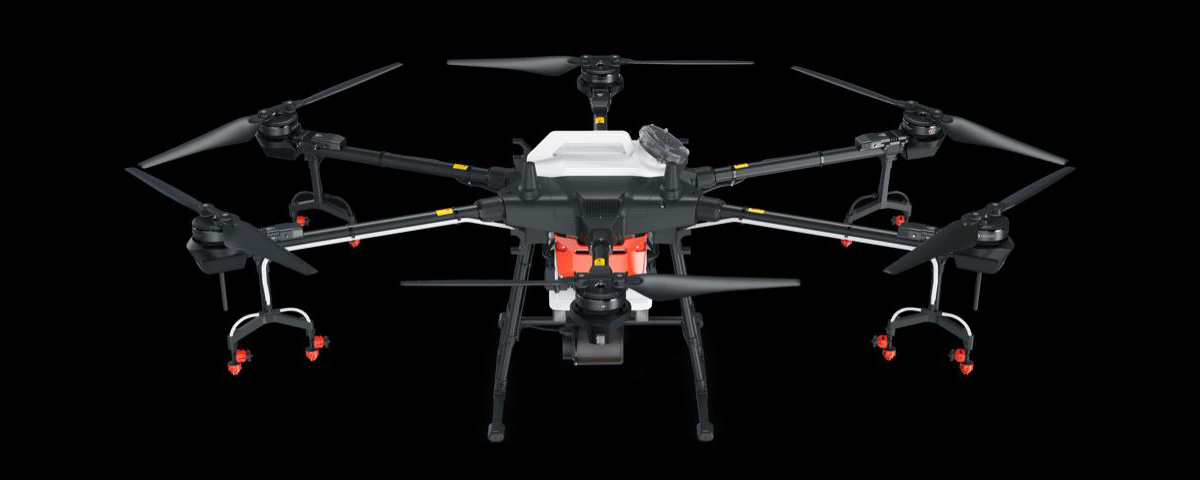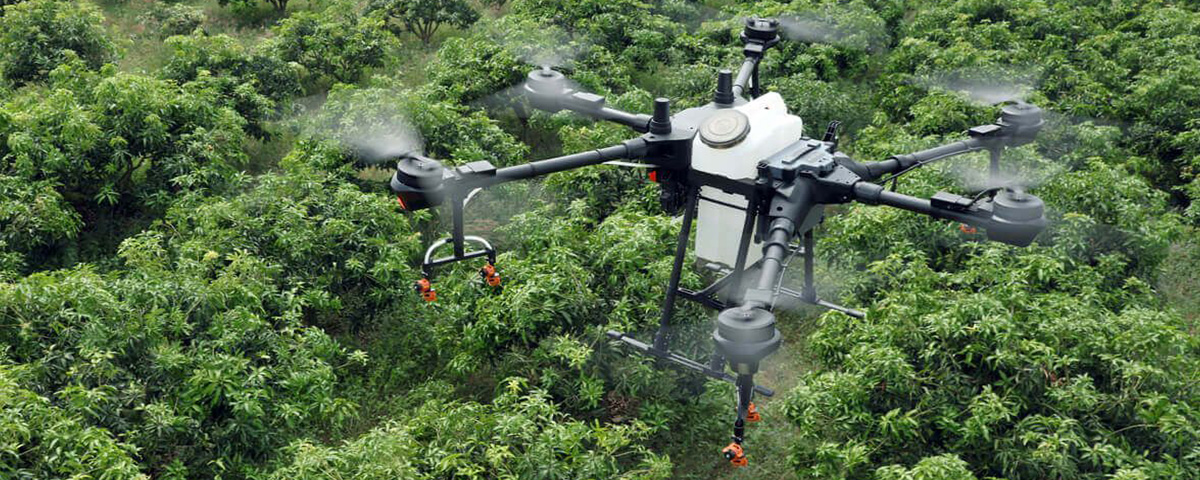Last August, the German Minister of Agriculture, Julia Klöckner, welcomed her EU colleagues to an excursion to the steep slope vineyards on the Moselle. She not only explained the importance of the terraced vineyards for biodiversity to the assembled agriculture ministers, the colleagues also witnessed a demonstration with a spraying drone that is to be used for plant protection in the vineyards in the future. What was announced as the future of German viticulture on the steep slopes of Winningen has long been a reality in Switzerland: as early as July 2019, the Swiss approved the use of modern drone technology. Since then, drones with pesticides in ten-litre tanks have also been flying over Swiss vineyards.
 |
In Germany, the first spraying drones received their approval from the Julius Kühn Institute last year. The manufacturer droneparts had previously optimised the software as well as the flight parameters over a period of three years with many tests in cooperation with the State Teaching and Research Institute for Viticulture and Fruit Growing in Weinsberg as well as other cooperatives and winegrowing enterprises in Baden-Württemberg. The results sound promising: "As a cooperation partner, we have been able to apply crop protection products with drones over the past three years and have had pretty good experience with them," says Dr Manuel Becker, who supervised the trials at LVWO as part of an EIP (European Innovation Partnerships) project. Udo Opel, managing director of the Roter Bur winegrowers' cooperative in Glottertal, also took part in the trials and is convinced by the new technology: "We've already submitted an application to use spray drones to cultivate our winegrowers' most difficult-to-access steep slopes in future."
Their advantages are manifold: in practice, they score points in years with high rainfall by deploying directly after storms, when heavy machinery would do more harm than good on the sodden soils. "They make it possible for us to have a much higher impact; as soon as the leaves have dried, we can immediately start crop protection," says Udo Opel. But their use is even more interesting in the steep slopes on the Mosel or in Baden-Württemberg. Especially there, the use of labour for plant protection is enormous. "That's where the use of spraying drones makes a considerable difference," explains Dr Manuel Becker, "with the drone we can work a hectare of vines in a good 45 minutes." Until now, the only alternative to the high use of labour was the costly use of helicopters, which, however, often had to be additionally touched up by hand spraying. LVWO's trials showed that up to 90 per cent of the manual labour can be replaced by the drone. "In the grape zone, you sometimes have to touch up by hand for special botrytis protection, but that is manageable and can also be easily assessed by our weather stations," Udo Opel reports from his practical experience.
Also very important are the significantly better results for environmentally friendly crop protection: spray drones reduce the input of crop protection products on non-target areas by up to 95 percent, as well as the total amount of crop protection products used. "With a full wall of foliage, we need 1,800 litres per hectare by hand; the spray drone only needs around 100 litres," Udo Opel reports from his experience. It is even possible to reduce the quantity further - but that was "too tricky" for him. Another argument in favour of the drones is the improved user protection: while the workers have to stand between the rows of vines in a protective suit and breathing protection in the worst case scenario, even at 30 degrees, a simple breathing mask is sufficient for the pilot, as contact with the pesticide is almost non-existent. And even if the use of the helicopter in the narrow Glotter valley is not an issue, the drastically lower noise pollution in comparison is another argument in favour of drones.
 |
However, their economic viability depends above all on the possible operating times. "I estimate that a drone like this becomes interesting from ten to 15 hectares," estimates Udo Opel. "Therefore, the acquisition and training of a pilot definitely makes sense for us as a winegrowers' cooperative." But even if the variable costs for the pilot of a drone as a service provider are factored in, the flying helpers should significantly reduce the costs of plant protection from the air. "We calculate up to 300 euros per hectare," explains Dr Manuel Becker.
With the approval of the Agras MG-1P and Agras T16 spraying drones from the manufacturer DJI, two models are now available for use in steep slope viticulture. The DJI Agras T16, which costs about 12,000 euros, is equipped with a 16-litre exchangeable tank and eight nozzles and has a maximum ascent weight of 40.5 kg. As part of the approval process, the IDK 90-025 C injector nozzle from Lechler was defined as the standard nozzle. With a flight speed of up to 12.8 km/h in automatic mode, its pure flight time for the treatment of one hectare of vineyard is around 15 minutes. Added to this are the journey and set-up, flight to the vineyard and return flight to the landing site, battery exchange and refilling the tank. The drone has a span of about 2.5 metres and a working width of three metres. It detects the terrain via radar sensors and regulates its flight altitude in real time during the automatic overflight.
But so far, the administration and politicians have not given permission for take-off: The approval of crop protection agents for drone use is still missing. The FDP parliamentary group used this as the occasion for a small question to the federal government back in October 2020. With reference to the use of drones in Switzerland and Luxembourg, the MPs express their incomprehension about the lack of approval. In it, they write that in Switzerland, German technology has long been advancing the digitalisation and modernisation of steep slope viticulture, "while in Germany they fail due to the lack of recognised procedures for the correct measurement and recording of drift".
At least the federal government confirms the advantages of drones with regard to the environmentally friendly application of plant protection products and the measurably reduced drift. According to the report, the main problem for those responsible is the amount of water required. This is 150 litres for helicopters, an amount that is too high for drones. "We assume that approval will be granted for 75 litres per hectare," says Dr Manuel Becker optimistically. Udo Opel is also more than convinced by the new technology: "I have few concerns that the approval of crop protection products will not follow quickly. The new technology will catch on and make the work of winegrowers much easier."